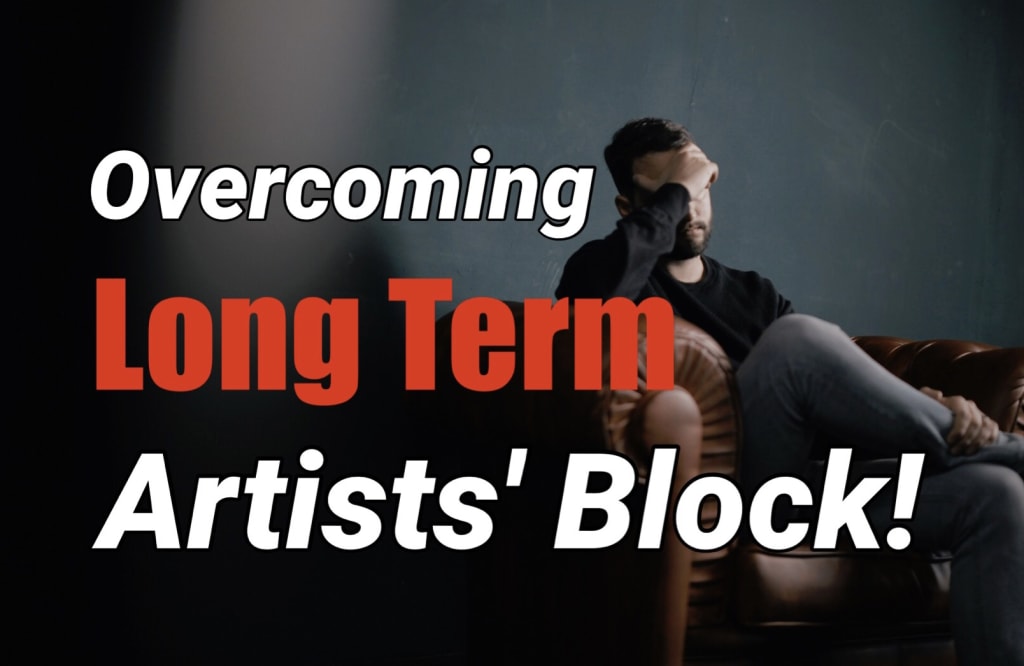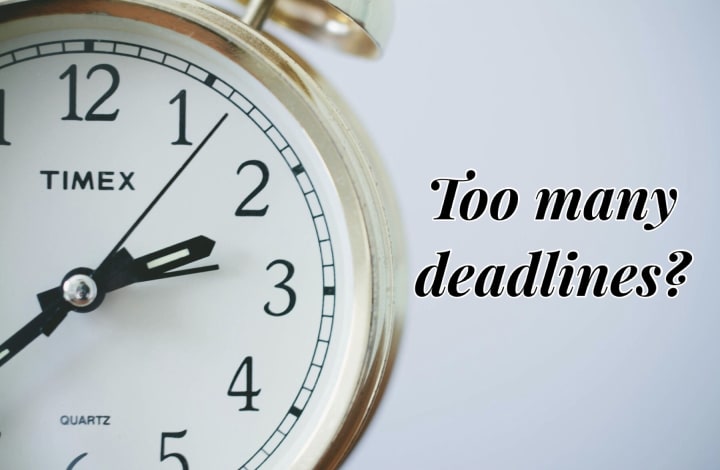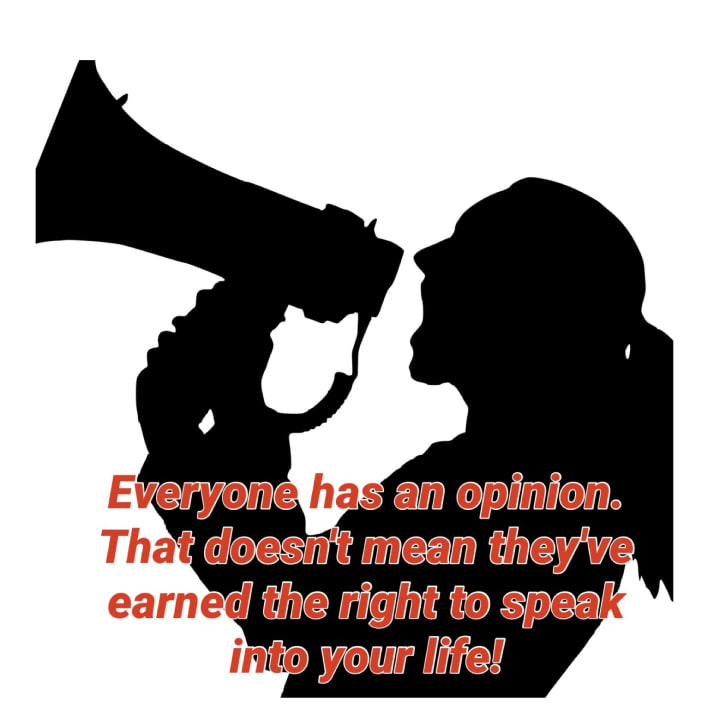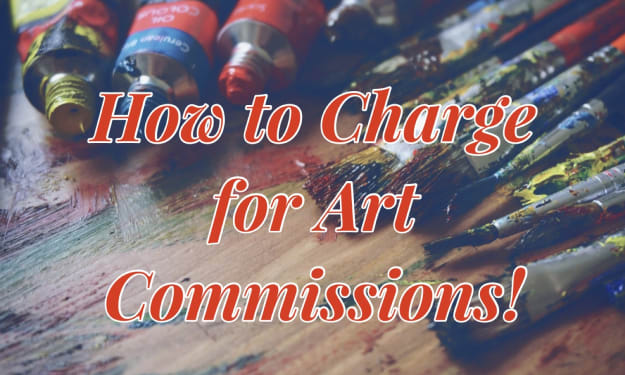Overcoming Long-Term Artists' Block
Why common strategies may not be working, and what to try instead!

Does this sound like you?
You've tried everything. Daily prompts, new paints, bigger canvas, video tutorials, a different style, maybe even an Inktober. And all of this effort feels about as motivating and inspiring as forcing a cat into a pillowcase. Nothing feeds your creativity anymore, nothing gives you that sense of challenge or excitement you used to enjoy. It's like your mojo has been struck dead. Nothing you've tried can bring it back, either. This may have been the case for months or even years, but one thing is indesputable: you've lost your zeal for creating. You are suffering from artists' block.
What's next?
Giving up?
I hope not!
Before you throw in the towel, listen to what I have to say.
The strategies listed above are absolutely awesome . . . if you're trying to get over a short term lack of inspiration. When it comes to curing chronic artists' block, however, all they do is cover the symptoms--not the cause. If you're losing heart because they're not working, listen: THERE IS STILL HOPE! In this article, I'm going to help you attempt to identify the root causes of your block, and guide you towards potential methods of tackling these inner demons which may be dragging down your creativity. Then, you may have a clearer idea of what you need to work on to liberate your mind and get back to doing what you love!

My name is Shelby Lynne, and I'm a freelance artist and private art instructor. I've been undertaking professional fine art commissions since I was nineteen, and have studied Classical techniques from both the London College of Art, and the Schissler Academy of Fine art in Loveland, Colorado. I specialize in realistic portraits and pet portraits.
I know how depressing it is to lose your passion. I've been so close to throwing up my hands in disgust and giving up art forever . . . more than once! As a child, all I wanted to do was draw, draw, draw, and frequently did so when I should have been doing schoolwork. Fast forward to my adolescent, then young adult years, and a blank piece of paper had begun to fill me with dread. Even the touch of my beloved pencils were almost abhorrent. Eventually, after years of tug-of-war between my desire to be an artist and my desire to give up, and mountains of anxiety and introspection, I was able to find the causes of my own block(s) and the keys to overcoming them. Now, I'm as passionate and motivated as I could wish to be on a regular basis. I'm now producing art as a full-time job! What this means is that I've been on both sides of the struggle, and now I want to use my own experiences to help you with yours.
Warning: this process is going to require a level of vulnerability. You may discover things about yourself which you have yet to face, and which may be absolutely crutial to overcome if you're going to be able to move forward. That being said, I'll set the example and open up to you a bit about my own struggles and how I moved past them, and hopefully together we'll make some progress!
Now, I have two questions for you: "Why did you love to create?" and "Why did you stop loving it?" Let's figure this out together!

Go back to the last time you created something you felt really good about, and recall why you enjoyed making it. Why was that piece different from what you're producing now? What about it inspired you and made you feel alive?
Researching my own block, I found that the past artwork which had given me the most joy and fulfillment had a few things in common:
-I had chosen the design. Not a client, not my mom, not an instructor. Just me!
-There were no deadlines (Some artists thrive under deadlines, but most of the time, they're killjoys)
-There had been no expectations of greatness or perfection. These were paintings I'd created just for the fun of it. Not for a contest, to prove a point, to try to sell, or to flaunt my skills. Just pure fun and experimentation.
-These paintings gave me a sense of freedom, and a sense of self. A pure expression of "me," and no apologies or pretensions.
Your turn! List everything you loved about your own favorite pieces, and why they had given you that creative thrill. Does anything you make today fall in line with those standards?
Next, let's try to identify when you lost that enthusiasm. This took a long time for me to pin down, and a great deal of soul searching. In the end, there turned out to be several contributing factors.
-I was only doing commission work, so it was always someone else's idea.
-I was offering too broad a range of services.
-I had unrealistic expectations for my work, putting too much pressure on myself to be outstanding, successful, fast, perfect, etc.
-Not much forgiveness for failures.
-Trying to attain a level of perfection in too many mediums.
-I was burdened under cycles of negative thinking.
-I was accepting advice and feedback from the wrong sources.
-And last, but not least, I was drowning in personal stressors and family problems.

Perhaps this sounds like you, and perhaps there are other points you could add. Try to list everything about creating that pulls you down. This can take both time and a lot of work, so if it doesn't seem obvious at first, don't worry. Do some soul-searching and come back to the question often. It's sometimes surprising what you may find out about yourself! I'm going to address each point above, and provide an alternative way of thinking to hopefully show you how to heal from them. (This is by no means an exhaustive list, so if you have identified issues not addressed in the article and would like someone to talk to about them, by all means send me a message anytime! You can find my social links below.)
1: The Commission Prison.
People want to buy your art! That's a good thing, isn't it? Yes . . . and no. Nice as they sound in theory, a lot of artists end up swearing off commissions for good after a few years because they can be so stressful. And there are several reasons why this may be the case.
-Impending deadlines
-Loss of personal expression
-Being taken advantage of (if you feel you're not being reasonably compensated for your work, or would like to know more about how to price your artwork in a way that protects yourself from "doormat-dom," see my related article here: https://vocal.media/lifehack/how-to-charge-for-art-commissions )
-Loss of freedom
It's important to take a break from commissions once in a while. Make time for creating your own art. This isn't only good for your portfolio, as prospective clients will be able to see what you're capable of on your own, but will strike your creative juices with a breath of fresh air. Educate yourself on how to protect both your art and your time from being abused, and, if you're really in demand, it may be time to raise your prices to compensate you for your trouble. Don't take on commissions that don't interest you or that conflict with your personal style. Don't subject yourself to deadlines if you don't work well with them. Remember, you are the one in control of your own art business--not the clients.

2: Time to Niche Down
You can't please everybody, and the most important person to please, in this case, is yourself. Along the way, I was offering everybody everything: children's illustrations, watercolors, oil paintings, pastels, charcoal, graphite, landscapes, portraits, book covers, and so much more. This kind of creative menu is overwhelming both to you and your clients. I read a quote somewhere (and will gladly credit them if you tell me who it was), "It's better to whole-ass one thing, than half-ass many things." Find something that gives you the most joy, and commit to perfecting that first. Let everything else be fun little extras, with no more pressure to be more than that.
After trial and error, and some introspective growth, I realized that my favorite subjects were faces, both human and animal, and my favorite medium was pencils, both graphite and colored. These are what I offer to clients automatically now. I'll still accept commissions for other things once in a while on special request, but only if it's something I think I'll enjoy, or if the client will offer sufficient compensation to me to make it worth my while. It's so much easier now that the only things the client needs to choose from me are the size of the piece, and if it's tonal or colored.
Niching down doesn't limit your artistic reach. On the contrary, it makes you more appealing to a specific clientele who are more likely to remain loyal to you as long as you're producing the specific things they've followed you for. After settling into my own niche, I've been able to charge higher prices, grow my social media accounts, and contract for more work than I ever have before.

3: Unrealistic Expectations
Vincent Van Gogh only sold two paintings in his lifetime. If immediate sales or academic praise are our measure of success, then he should have given up before he started.
Or should he?
In our society of dazzling stars, godlike artists around every corner, and inspirational entrepreneurs, it's easy to feel inferior. I used to think everything I created had to be incredible, impressive, sellable, perfect. The next best thing since Michelangelo. The truth is, unless you're a savant or have a magic wand, these goals are simply unreasonable. Don't be so hard on yourself! Remember, you don't have to be, well, anything! Be an artist because YOU WANT TO and because you CAN. If it's not perfect, so what? If you enjoy what you do, that's the most important thing! If other people like your work, or if you end up famous, that should be the cherry on top, the reward for your efforts. Not the reason for creating.
4: Forgive Your Failures
I tell all my students: "There's no such thing as a bad drawing." Did you make a mistake? Great! Figure out what you did incorrectly and learn from it. I bet you almost anything, next time you try it will be better! Maybe all you can do today are random doodles. Excellent! I encourage all my students to doodle; it teaches muscle memory and builds hand control.
I don't remember who said it (if you do, send me a message!) but here's a favorite quote: "he who never makes a mistake, never learns." Be kind to yourself. Celebrate your victories, and cultivate an encouraging mindset. We're all learning, and we all make mistakes. The trick is the enjoy the process and keep learning!
5: Overcoming Negative Thinking
We're all our own worst critics, and it's easy to allow that voice to have too much influence. Thoughts of inferiority, failure and worthlessness always lead to loss of confidence in our work, and cause us to appraise our art more disparagingly than it may deserve. I've even known artists to use self-abasing statements as a shield against criticism, so if anyone came at them with something negative to say they could return with "Well, I told you I'm no good," or "I never said I was a genius."
Haters gunna hate. Why do them the favor of legitimizing their complaints by accepting what they say?
Here's the thing: if you don't believe in your own creativity, why should anyone else? No one can tell you to have a higher opinion of yourself, and no one can make you confident. These are things which must be cultivated within yourself.
Try countering those knee-jerk negative comments with positive ones. Instead of "it's terrible," use, "I'm glad I tried." Or replace "I'll never amount to anything," with "I've come such a long way already--who knows where I'll go?" "It's ugly," can be translated into either "It was a learning experience," or "at least I enjoyed myself." "Darn it, I have to draw today," could be "Let's experiment with something new today!"
Instead of comparing yourself to where you want to be, compare yourself to where you were.

6: Listening to the wrong feedback
It's a fact strange but true: the non-artistic people in your life seem to have the loudest opinions on what you should be doing with your talents. I myself have become deeply discouraged in the past by listening to the wrong influencers who asserted "You have to appeal to this audience, if you want to succeed," or "No one is going to want to buy paintings like those," and "It's great but . . . you're going to have to do other things to make it as an artist," and "Why don't you ever paint something like this?" Ugh!
The truth is, there's something for everybody. Whatever you create, stick to your guns. When you stop doing what you love and create art you think other people will like, your work will lose its uniqueness--that spark that makes it . . . yours. You will have become commercial.
How do you stand out from everybody else? Be yourelf! Everyone else is taken! People don't want your art because it fits what they think you ought to be doing as an artist, or because they admire your business sense. They admire art that touches something in them, that reminds them of personal experiences, or which reflect their own unique personalities. How can you say what paintings will do that for which people? The best way to connect with individuals on an emotional level like this, is by producing art YOU want to make, and which says something about YOU. People will take it or they will leave it, but you're not here to please everybody. As I said before, use your talents to please yourself, first. If you're not doing something you love, then what's the point?
Find an art mentor whose opinion you can trust, and ask them for honest feedback. If there are people in your life who are over-critical of you or your work, avoid their opinions and stop sharing your artistic journey with them. Remember, you know more about your own talents than they do!

7: Outside Stressors
We're all going through something, and stress can really suck the life out of creativity. This has definitely happened to me, more than once. One rut that I have fallen into was that, in a world I could not control, I was becoming too controlling of my own talent. After years of fighting the feeling of being trapped and stressed, which emotions my art contributed to at the time, I had to teach myself new ways of thinking. What helped me to overcome this was changing my view of art as yet another burden, to freedom from those burdens. Art had to become a way of self expression for me when I was trapped in a life I didn't want. It was liberty when I couldn't fly away. And that's when my passion returned to stay.
To steal a line from the movie Passengers: "Take a break from worrying about what you can't control. Live a little."
Make time for joy in your life. Take a break from stressing. Treat yourself to activities which make you feel alive and fulfilled. Whether that be a long hike, bubble bath, time with friends, a cruise through your local bookstore, or tickets to the opera, it's important to remember to have fun and take a mental health break. If you're already sapped emotionally and physically, there's unlikely to be any energy leftover for creativity and inspiration. It's essential to have "me time!"

8: Additional Resources
Whether or not you're religious, I recommend getting in touch with your spirituality. In almost any religion, creativity is one of the first attributes of the gods, and it's one of the things which separates us from the animal world. Take time for meditation or mindfulness, quiet introspection and prayer if you can. It wasn't until I knuckled down and prayed for help with my own artists' block that these solutions began pouring in (praise God!).
Try listening to something while you work. A lot of artists like to play music to get into the creative zone, but I personally have found audiobooks to be an invaluable tool. If the story is good, sometimes I'll sit down to draw just as an excuse to find out what happens next! It also means that I have to pay attention to what I'm listening to, so it keeps the wandering portions of my mind occupied while working. You can even try podcasts or TV shows.
Feeling frustrated? Studies (and my own experience) have shown that exercise is a great stimulator for creativity. Even a small walk can calm the mind and increase your positive, creative energies. Get up, walk around, do a dance, and get your blood flowing in whatever way works best for you.
Find people who inspire you, mentors you can trust, and limit your contact with negative people as much as is within your power. Be kind to yourself, stay positive, and, most importantly, never give up!
I hope this article has been of some use to you. If you still have questions or feel I've missed anything, feel free to message me anytime! You're also welcome to follow me on Facebook and Instagram:
Facebook: https://www.facebook.com/Shakingbirdart/
Instagram: https://www.instagram.com/shakingbirdart/
If you enjoyed this article and would like to promote more quality content, please feel free to leave a tip! It helps me out tremendously. Thank you!

About the Creator
Shaking Bird Art
Shelby Lynne is a professional artist and art instructor. Her great passion is to share her knowledge of the art world with others, and promote a culture of curiosity, enjoyment and kindness through creativity.






Comments
There are no comments for this story
Be the first to respond and start the conversation.